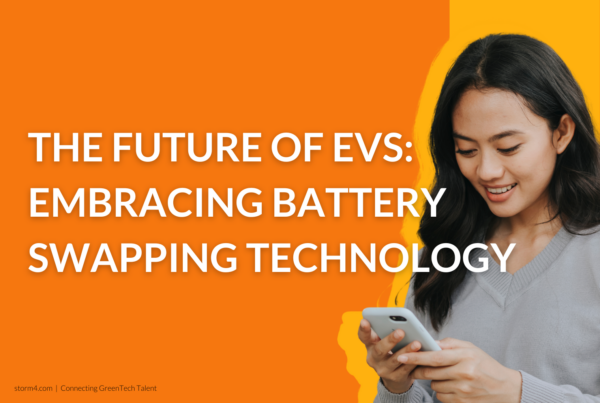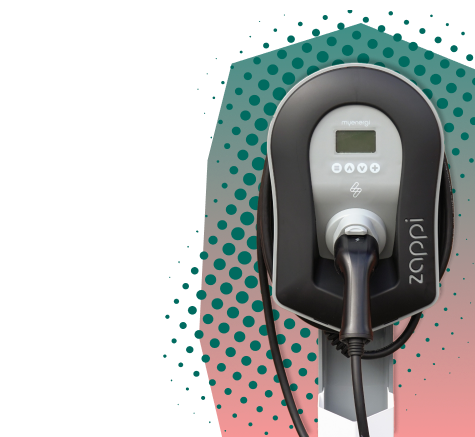What is GreenTech?
GreenTech, also synonymous with environmental technology, CleanTech or ClimateTech, are all terms to describe an industry powering a sustainable future. These businesses are at the cutting-edge of ‘clean’ innovations to curb the defining crisis of our generation; climate change.
GreenTech represents a diverse range of technologies all intended to:
- Provide superior performance at lower costs, while
- Greatly reducing or eliminating negative environmental impact, at the same time as
- Improving the productive and responsible use of natural resources.
Historically, investment only started to pick up in GreenTech in the mid-2000s; in 2006, $75billion was invested in clean technology projects and businesses worldwide. The market was predicted to quadruple by 2012, however, the 2008 financial crisis combined with slow technological progress and scalability issues led to the GreenTech bubble bursting. A decade later, the industry is making a big comeback as the effects of climate change are increasingly becoming tangible.
“I think many of us feel as though we missed an opportunity over the last 20 years to reduce our carbon footprint. There is more urgency involved in investments as climate predictions grow increasingly dire”, Storm4 Founder, Kayleigh Bottomley.
The recent COP26 summit has re-aligned governments and companies net-zero commitments, seeing money pouring into technologies to combat climate change at an unprecedented rate. Investments have already exceeded that of 2020 and quadrupled since 2016. It is thought that GreenTech could be worth more than oil by 2030.
The Subsectors of GreenTech
The GreenTech industry has grown to define a business sector that includes high growth industries, such as:
- Future mobility
- Circular Economy
- Clean Energy
- Smart
- AgTech
- Decarbonization
- Energy Storage
Future Mobility
Nowhere is there a greater need to introduce environmentally friendly technologies than the fastest-growing source of global emissions: the transportation industry. Fuelled by the electrification of vehicles, connected & autonomous vehicles and Mobility-as-a-Service, consumers will now be able to get from A to B in a way that is cheaper, cleaner and safer.
Investments in new mobility startups have increased significantly; $120bn has been invested in the last year as it prepares for the electrification of the industry. A recent survey by the US Conference of Mayors has net-zero vehicles are at the top of US Mayor’s climate agendas, labelling electric vehicles as the most promising technology for reducing energy and carbon.
Circular Economy
Moving away from the linear take-make-model that has been used since the Industrial Revolution, a circular economy recovers and reuses as many products as possible to reduce waste and solve the increasing demand for finite resources.
Recycling, reusing materials and reducing waste makes clear business sense, which is why spending on the circular economy is rising rapidly. The circular economy presents a unique market opportunity upwards of $4.5 trillion by 2030. Accelerating this transition relies on the uptake of innovative new business models and disruptive technological innovation.
Clean Energy
Clean energy is defined by NCSEA as the energy that comes from renewable, zero-emission sources that do not pollute the atmosphere when used, such as solar, wind, water, geothermal, bioenergy, nuclear and hydrogen and fuel cells.
A clean energy economy powered by renewables and energy efficiency is the most sustainable energy scenario to meet the Paris Agreement of limiting global warming to 1.5C, and the benefits are clear. In the United States, more than a third of emissions are derived from coal and other fossil fuels. Switching to renewable sources would reduce this and provide as much as 40% of the American energy demand by 2030.
Smart
As we move into a digital-first, data-driven world, smart grids, smart energy, smart water and smart homes all play a vital part in the transformation.
For example, smart grids are essential in the digital revolution of the electricity sector. Serving several purposes, the movement from traditional electric grids to smart grids is driven by the deregulation of the energy market, evolutions in metering, changes in the level of electricity production and decentralization.
AgTech
AgTech represents the application of technology to the field of farming, encompassing diverse solutions to almost every step in the food production process. A recent study published in the scientific journal Nature, suggests that the effects from current agricultural technologies have the potential to push the Earth past critical tipping points.
From indoor farming, micro-farming and alternative proteins, to sensors for crop management and GPS field mapping, the AgTech boom has come into full fruition. Consumers are also fuelling the revolution, demanding greater accountability about where their food comes from and an increased desire for more nutritional food that relies less on animals.
Decarbonization
Decarbonization refers to the process of reducing carbon dioxide (CO2) emissions from the atmosphere. The current objective of decarbonisation is to eliminate all carbon dioxide emissions. To achieve this, the world needs to re-think how it produces and consumes energy and operate a radical switch to renewables and low carbon energy sources.
Earlier this year, the US set a target to create a carbon pollution-free power sector by 2035, a significant component in the country’s goal of achieving net-zero emissions by 2050. Whilst renewable technologies such as solar and wind are already cost-competitive with coal and gas across most US markets, decarbonizing electricity is the next essential step to enabling decarbonization in other sectors, such as transportation (electric vehicles) and buildings (electric heating).
Energy Storage
Energy storage is an enabling technology, capturing energy produced at one time for use at a later date. The accumulator or battery converts energy from forms that are difficult to store to more conveniently or economically storable forms. This can save consumers money, improve reliability and resilience and help to reduce environmental impacts.
Lithium-ion batteries are by far the most popular battery storage option today and control more than 90% of the global grid battery storage market. Compared to other battery options, lithium-ion batteries have high energy density and are lightweight. New innovations, such as replacing graphite with silicon to increase the battery’s power capacity, are seeking to make lithium-ion batteries even more competitive for longer-term storage.
The Disrupters of GreenTech
A heightened sense of urgency
Curbing the catastrophic effects of climate change has become the top priority for political and corporate spheres. The US and EU have committed to reaching net-zero carbon emissions by 2050, whilst China has said it will do so by 2060. Meanwhile, more than a fifth of the world’s biggest companies have signed up to net-zero pledges, with major global airlines joining the climate fight.
Achieving these net-zero targets require developing and adopting green technologies, ranging from green hydrogen production for carbon-free fuel to direct air capture facilities that can strip carbon out of the atmosphere. That has prompted an influx of capital into GreenTech.
Investors are back
There has been a surge in investment capital in the GreenTech space over the last 6 years, witnessing a 40% increase from 2013 to 2019. The sector has topped the charts and become the fastest growing VC sector, seeing a multitude of investors betting on technological breakthroughs to achieve political and corporate aims.
GreenTech-focused firms like Breakthrough Energy Ventures, Greentown Labs, Lowercarbon Capital, Congruent Ventures and Energy Impact Partners are just some of the investors dominating the space, having become well-versed in the technical and timeline risks inherent to investing in GreenTech.
In the US, several cities are investing substantial amounts in GreenTech as part of their mission to fully transition towards clean energy. Houston, for example, currently emits the highest greenhouse gas emissions on a per capita basis. As such, the city has launched its first CleanTech startup incubator, Greentown Labs, which will provide 40,000 square feet of space to host 50 startups and more than 300 employees working in the GreenTech sector.
“We’ve seen the volume of investment in climate tech accelerate in 2020 and, this year, it’s absolutely off the charts. We are seeing our startups be funded faster and in larger rounds than ever before”, says Emily Reichert, Chief Executive of Greentown Labs.
Who are Storm4?
Storm4 are the leader in global GreenTech recruitment, on a mission to connect organizations with senior talent to drive their mission for a more sustainable tomorrow. Launched in 2020, Storm4 focus on the GreenTech sector, working with businesses that are at the cutting edge of renewable energy tech, and ‘clean’ innovation. If you need help scaling your GreenTech, be sure to get in touch!













